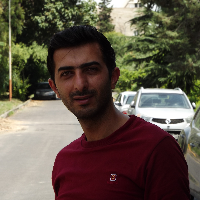Investigating the Accuracy of Predictive Mapping of Water Erosion Hazard and Determining the Impact of Input Factors in a Qharnaveh Watershed using the PAP/RAC Model
Author(s):
Article Type:
Research/Original Article (دارای رتبه معتبر)
Abstract:
Qualitative modeling is one of the methodologies employed for assessment. However, skepticism about the outcomes of such models has led to a reduction in their consideration. Consequently, this study employs the qualitative model approach of PAP/RAC to predict and determine the status of water erosion risk in the Qarnaveh watershed. This approach is juxtaposed with the RUSLE model, and influential factors are identified using Bayesian Model Averaging (BMA) to enhance evaluation, delineate vulnerable zones more effectively, and propose viable water and soil conservation strategies. Research findings revealed a 20.56 Km2 difference in predictions between the two models. Nonetheless, a meticulous spatial examination of water erosion risk prediction maps from both PAP/RAC and RUSLE models demonstrates a spatial congruence of 67.74%, predominantly within the "very high" category. Furthermore, the analysis of influential factors (slope, lithology, land use, and vegetation cover density) on the erosion risk prediction map, employing the Bayesian averaging approach, underscores slope as the most significant determinant in the developed superior patterns. In the PAP/RAC model, it exhibits adverse effects in the "very low" category but exerts positive influence in the "moderate," "high," and "very high" categories. In view of the significant influence of slope across all categories, it is therefore necessary to carefully classify and assess regional characteristics for refined predictions. Consequently, based on research findings, the PAP/RAC model emerges as the most efficacious and straightforward qualitative model for estimating water erosion risk in data-deficient watersheds, with precise consideration of its influential factors aligned with Iranian context. This methodological approach, which integrates descriptive and integrative techniques, not only facilitates precise prediction, but also facilitates the formulation of effective water and soil conservation strategies, thereby contributing to the development of a comprehensive strategy for sustainable watershed management.
Keywords:
Language:
Persian
Published:
Journal of Extension and Development of Watershed Managment, Volume:12 Issue: 44, 2024
Pages:
53 to 67
https://www.magiran.com/p2751641
سامانه نویسندگان
مقالات دیگری از این نویسنده (گان)
-
Development of a semi-automatic method based on object-based analysis and data mining algorithm in landslide detection (case study of Mohammad Abad forest watershed in Golestan)
Marzieh Nikjoui, *, Ali Shamsoddini, Hamidreza Pourghasemi, Chooghi Bairam Komaki
Journal of Remote Sensing and GIS Applications in Environmental Sciences, -
Efficiency Assessment of Rainwater Harvesting Systems for Water Supply in Livestock and Poultry Units: A Case Study of Golestan Province, Iran
*, Maryam Mohammadrezaei, Kosar Ghezelsefli, Mostafa Hosseinabadi, Taghi Ghoorchi
ECOPERSIA, Winter 2025 -
Investigating the Effect of Soil Characteristics on the Expansion of Gully Erosion in the Baron Chaldoran Dam Basin
*, Yosef Nabipoor, Farrokh Asadzadeh, Chooghi Bairam Komaki
Applied Soil Reseach, -
Evaluation of the efficiency of three data mining models in zoning areas prone to gully erosion (Case study: Upper Watershed of Boustan Dam)
Soraya Yaghobi, Mohsen Hosseinalizdeh *, Chouoghi Bairam Komaki, , Hamidreza Pourghasemi
Journal of Water and Soil Management and Modeling, -
Use of the CORINE Model in the Qualitative Assessment of Soil Erosion Risk in the Qharnaveh Watershed, Golestan Province
*, Maedeh Parichere,
Whatershed Management Research,





